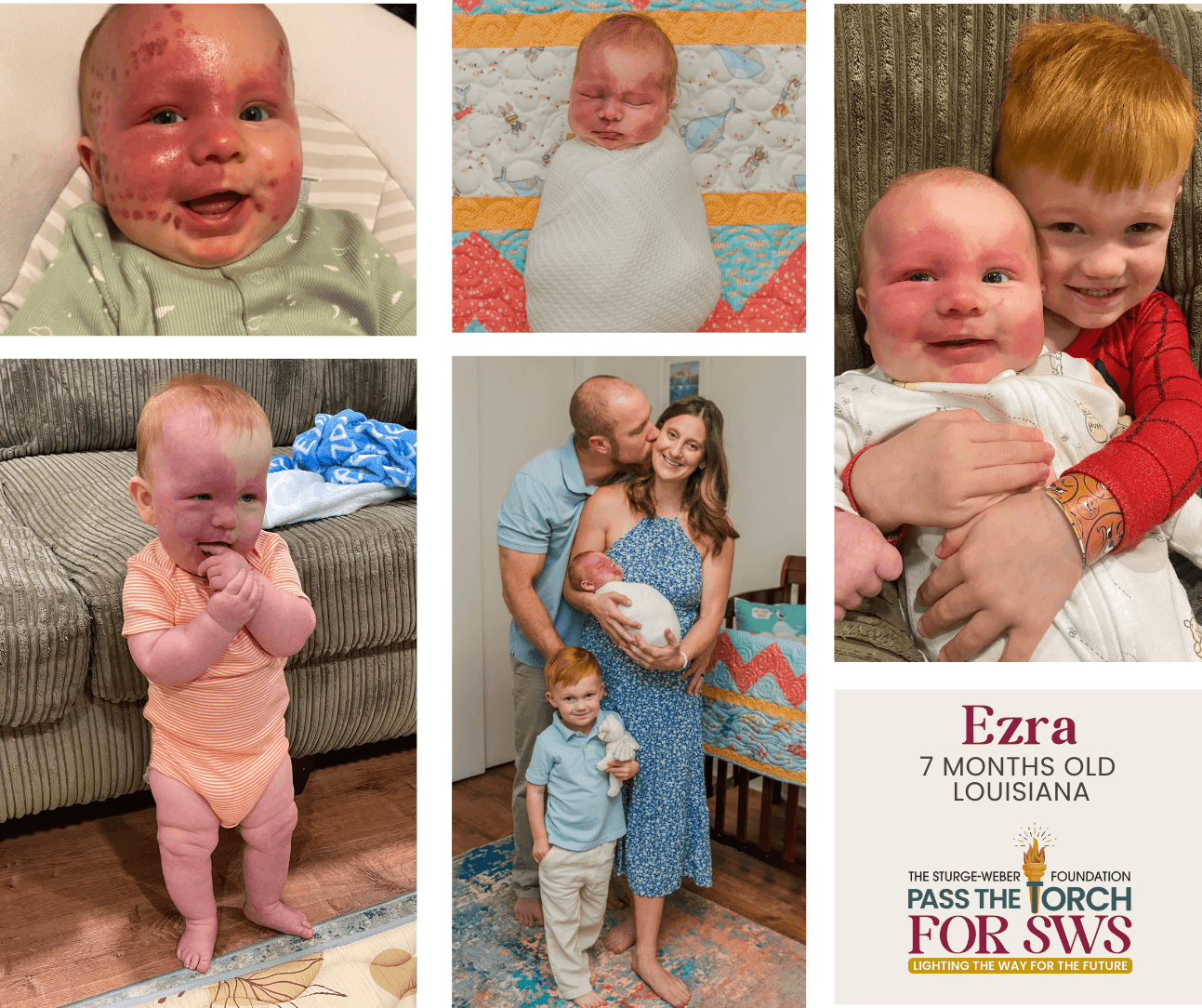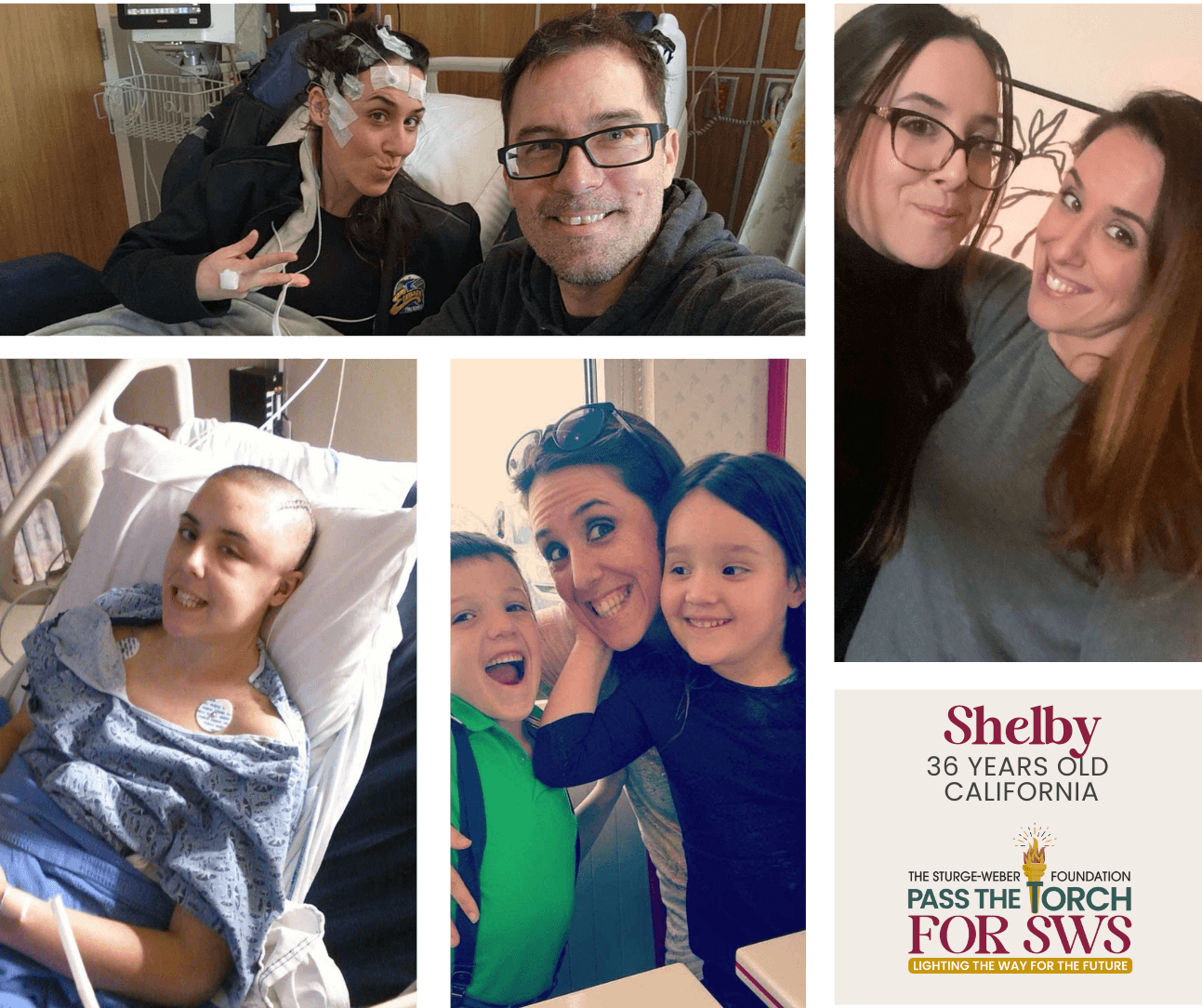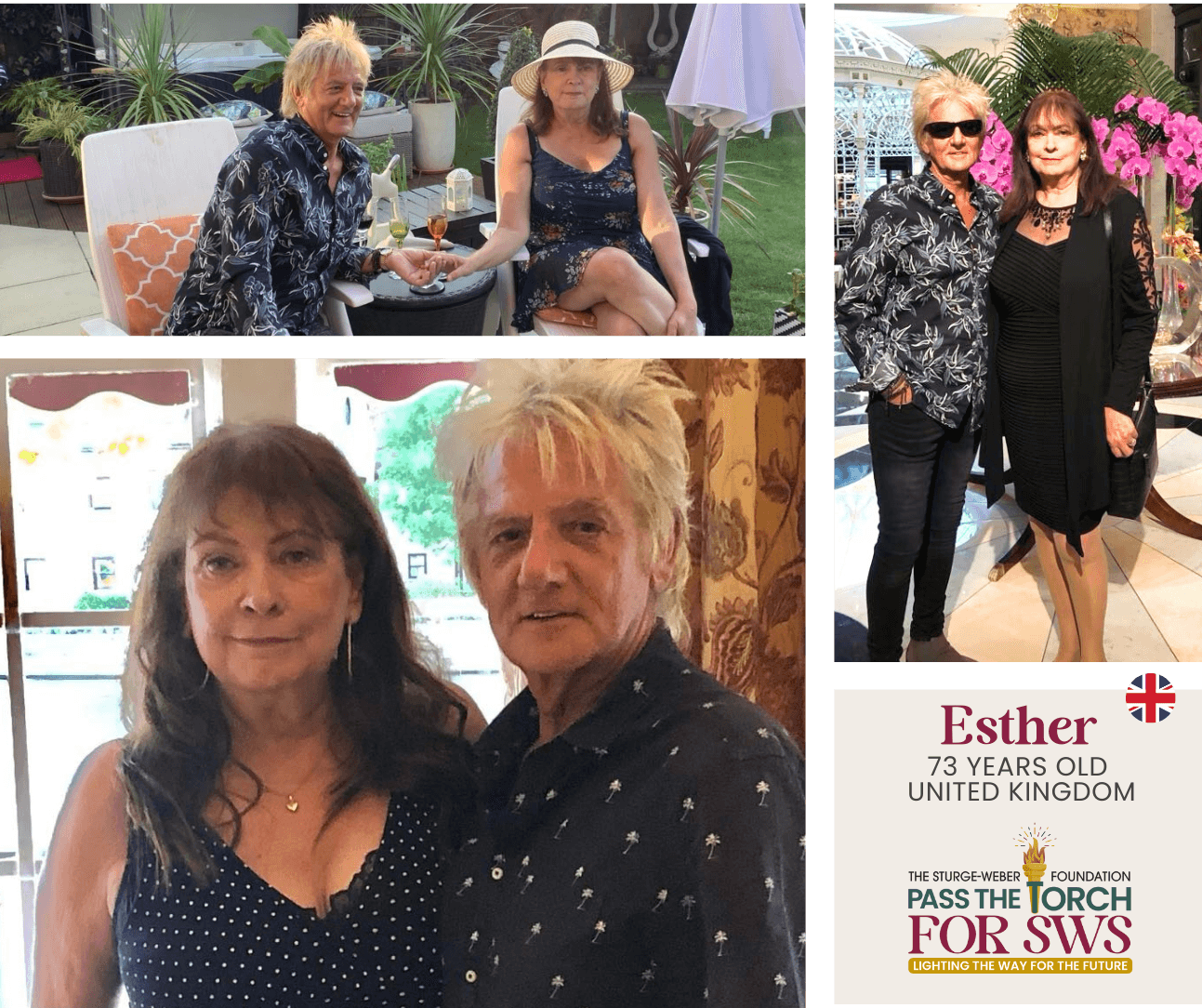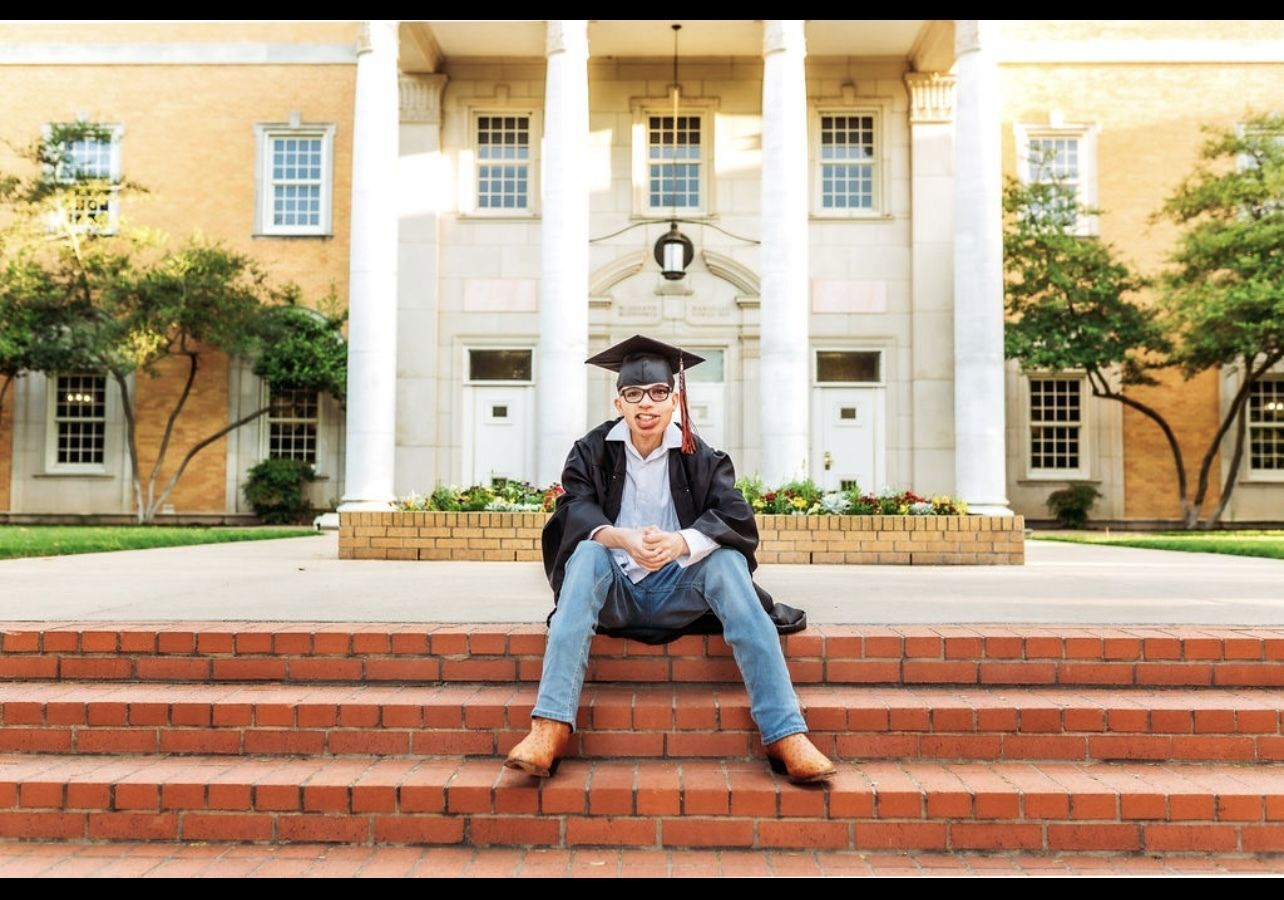Patient Stories | Month of Awareness
Read the stories of families who are Sturge-Weber Strong every day.
SWF Warriors are unstoppable. Every day, they rise above the challenges of SWS—be it seizures, strict medication routines, glaucoma, learning struggles, or even the sting of bullying. Their strength doesn’t just inspire—it empowers.
Their families keep pushing forward, hold on to hope, and know they are never walking this path alone. Their journey has the power to change lives.
This SWS Awareness Month, we want you to read their stories.
Every voice matters. Their journey matters. Your support matters. Consider giving the gift of hope today by supporting our research and awareness efforts!
-
 The Kin Family
The Kin FamilyWhen Eloise was diagnosed with Sturge-Weber Syndrome, I was overwhelmed with emotion—sadness, fear, anger, and confusion. I was desperate for answers.
The Sturge-Weber Foundation became a lifeline for us. They helped us connect with other families navigating the same journey, giving us a sense of community and comfort. They also connected us with specialized doctors in our area, which has been incredibly helpful.
The hardest part has been facing so many unknowns. But the diagnosis has given us perspective—it’s taught us to appreciate the things we once took for granted and to approach others’ differences with empathy and positivity.
-
 The Gulino Family
The Gulino FamilyWhen Ezra was first diagnosed with Sturge-Weber, we were scared, overwhelmed, and worried for his future. The Sturge-Weber Foundation has provided a wealth of knowledge and resources to understand SWS and help parents become the best advocates for their children. After all, there are times when we are educating doctors on the ins and outs and possibilities of this disease.
The Foundation has also made us feel less alone as we face the challenges and unknowns of Ezra’s diagnosis. It’s promising to see the research going on to work towards preventative care and managing symptoms. The biggest struggle for us is the unknown and the constant feeling that something is about to happen, a breakthrough seizure, a bad eye appointment, etc. It is also hard to navigate what is normal baby behavior, what could be side effects of medication, and what could be seizure activity or a developmental delay. After Ezra’s diagnosis, we were forced to slow down and evaluate our priorities and what is most important to us.
We now celebrate every small step of progress and are so grateful for our village, our specialists, our SWS community, and everyone who has walked this journey before us.
-
 The Bailey Family
The Bailey FamilyWhen Zaya was diagnosed with Sturge-Weber, I was in shock, but I wasn't. I was relieved to have an answer, but I knew that our lives were going to change for the better. And I was going to be learning something new. I knew so much about autism. But nothing about the rare condition of Sturge-Weber. I was open-minded and excited to learn.
The Sturge-Weber Foundation has given me so much information and hope.
Our biggest struggle is probably the financial adjustment, but we are overcoming it and taking it one day at a time.
Some days, I have mom-guilt like I should be doing more. Our journey has been an interesting one. There have been a lot of ups and downs, more positive than negative. And we have such an amazing team in Seattle.
I'm excited to continue her journey and to begin her laser treatment to better her life. I am excited to continue to learn more, understand, and study her birthmark, diagnosis, and her arm growth.
Thank you to everyone who prays, thank you, God, for every day. She has a beautiful life. Thank you to Dustin for working so hard so I can be home with her daily and never worry. I am thankful for my parents who give my son weekly sleepovers and help whenever they can. Thank you to Dustin’s family for loving our daughter and spreading awareness. Thank you to my friends, aunts, and uncles who love her.
We are blessed to be her parents. We are blessed to have a rare daughter born in the time of innovative medical treatments. I am thankful we found a team within a couple of hours of driving. I am thankful to everyone who has helped us. I am thankful for everyone who loves Zaya for who she is and is willing to learn about her.
-
 The Diefenderfer Family
The Diefenderfer FamilyMeet Ruby—our one and only.
From the start, Ruby did things her own way. She arrived via C-section, sunny side up. A red mark on her face was thought to be a bruise, and her feet turned blue in the nursery. She had a sacral dimple, which turned out to be harmless. But once we got home, we noticed more.
Ruby had trouble latching, was often inconsolable, and her limbs looked uneven. Her right eye seemed larger. We were told not to worry—“everyone has some asymmetry.” But we pushed for answers. An eye exam at eight weeks revealed dangerously high pressure—46 in her right eye. We were sent straight to Riley Children’s. That’s where her glaucoma journey began.
She’s had four eye surgeries so far, two shunts (one not working), and seven laser treatments for facial capillary malformations. This year alone, she’s getting her third set of ear tubes and a sleep study. She sees ophthalmology, hematology, neurology, ENT, orthopedics, and pediatric dentistry. She gets weekly OT outside of school and daily OT in kindergarten.
She’s also had a heart echo that found a PDA and atrial septal defect. Luckily, her brain MRI at one year showed involvement but no seizures. Ruby had a leg length difference and left-sided weakness. She wore braces and a shoe lift for a while. She hated them, but they helped. She also struggles with depth perception, especially on stairs.
At school, Ruby wears sunglasses at recess for eye protection. She teaches friends why. She also has to explain her cold intolerance and skin changes due to her syndrome.We’ve always been honest with Ruby. She knows about her condition and handles it with surprising grace. She just learned this year that not everyone has glaucoma. Through it all, we’ve learned to trust our instincts, ask questions, and never accept “no” for an answer. If it weren’t for Facebook groups and The Sturge-Weber Foundation, we’d be lost. Connecting with other families—and meeting Karen—has been life-changing.
Ruby is on max eye drops (four kinds, three times a day), but her vision is perfect, so no glasses for now. She loves dance and gymnastics. She’s kind, thoughtful, and wise beyond her years.
We wouldn’t change a thing. Ruby is here to teach us—and she’s doing an amazing job.
______
*"A sacral dimple is a small, shallow indentation in the skin on the lower back, typically just above or within the crease of the buttocks. It's a congenital condition, meaning most people are born with it. While generally harmless, sacral dimples can sometimes be associated with other spinal conditions." - Mayo Clinic -
 Shelby Jennings
Shelby JenningsI'm 36 years old and live with Sturge-Weber Syndrome Type 3,* a condition my twin sister doesn't have.
For me, growing up with Sturge-Weber, every time I’d have a new neurologist, it was always questioned if I had Sturge-Weber because I was “too high functioning and I don’t have a port-wine stain,” but after having MRIs, I was diagnosed with Sturge-Weber.
The doctors first discovered that I had Sturge-Weber when I was nine months old. I had a seizure that lasted for over two hours, which turned into a stroke.
My goal and hope is to one day maybe become seizure-free. I had a part of my left temporal lobe removed back in 2012, and my seizures went down 99%, and a few years without a seizure. The last two years, I have had a few recurrences, and I’m currently in the process of possibly getting round two of brain surgery as they think they didn’t get all of the scarring out.
I’d say my biggest struggles with the disorder are overcoming my learning disabilities. I feel a bit of guilt for "not having bad symptoms," and I felt I didn't have the right to complain. I also dealt with all forms of abuse as a child because people believed I wouldn’t be able to tell when I’d become an adult.
I have learned you can live a full, independent life even if you have seizures. I’ve lived on my own since I was 19 years old. My seizures started to become chronic when I was 20 years old. I would have 2-6 seizures a day, but I was still able to start as a patient transporter at the hospital I was working at, and move up positions before having the surgery. I called my seizures “mc twitchels” to help ease people’s fears in case I had one in front of co-workers (this was to help ease people’s fears.) I could later show them that I was back to my full self. I currently have a career as a radiology assistant.
I am thankful for those who show empathy. One of my biggest goals in life is helping others with disabilities who have been abused, because sadly, it happens often, and unfortunately, I can relate because I am an abuse survivor.
The beauty of having my disability is that, over time, I learned how to use my voice and face my past. I can understand people who can’t speak, because when I have grand mal seizures, I have stroke-like symptoms and understand the feeling of being trapped within the body. I can make patients laugh during their hard times in the hospital because I know what it is like to be in a hospital bed. I love helping others who struggle because I can relate to them.
______
*Type 2 SWS: This type of SWS is commonly noted to have a leptomeningeal angioma, with no facial involvement and usually no development of glaucoma. Commonly referred to as forme fruste, this type is identified through brain scans. It can also be confused with other diagnoses prior to a brain scan with a contrasting agent. While social stigma is lessened by the absence of PWB, the unknown natural course of the syndrome is still frustrating for parents and professionals treating the condition. - The Sturge-Weber Foundation -
 Esther Harrold
Esther HarroldI was born in 1951 in London, UK. Information about Sturge-Weber Syndrome was very different in the 50s.
I was treated at the Children’s Hospital for only a short time when I was about three or four years old. I found out only five years ago that I was treated with a radiation called Thorium X.* It was painted on my birthmark to try and fade it, but it didn't work. Thorium X was too dangerous to continue as it was withdrawn from use in the 1960s. I read that it was found to cause cancer in some people many years after use, but luckily, I'm okay.
I must have SWS Type 2,** as luckily I never had any seizures or developmental issues, but looking back, I was quite a sickly child and grew into an adult with several medical issues, though nothing sinister. I don't believe they were SWS-related.
However, I was diagnosed with bilateral glaucoma in my 40s, and only at that time was I told I also had this thing called Sturge-Weber. I didn't know what it was and I wasn't referred to anyone about it, although, of course, I had to go see an eye specialist for the glaucoma. Obviously, the glaucoma in my right eye is caused by the SWS, but my mother also had glaucoma, so I inherited that from her in my other eye. Bad luck, as my specialist said.
Unfortunately, I didn't use the glaucoma drops as they brought side effects, but pretended to the eye doctors that I did. I didn't realise how serious glaucoma could become. About four years ago, I was told I could go blind, so I started the drops again. But I had resumed the drops too late, and now I am registered as Severely Visually Impaired.
The eye specialists did not want to perform glaucoma surgery on my SWS eye because it's too risky with the abnormal blood vessels in my eye. They said they could burst during surgery. But now things are getting worse, and they want to save what sight I have left, and now want to do the surgery. I have agreed, but am very nervous about it.
I don’t know if in the 1950s if my parents were told what caused my birthmark. I have never seen a neurologist and have never had an MRI for my SWS condition, although I've had plenty of scans over the years as I have a benign tumour in my pituitary. I know my mother must have felt that it was her fault I was born with such a mark. We never discussed it, but she was a very loving mother, and I wish she were alive to tell her what actually causes SWS and that it wasn't her fault. Over the years, I thought it must have been caused by forceps, as my mother had a 30-hour labour, or a sort of blood flow problem, because my grandmother was dying when my mother was pregnant and died three months before I was born. I thought this great upset to my mother and might have affected me in the womb. We didn't know then what we know now.
My biggest struggle is feeling the need to constantly cover my birthmark with cosmetics because if I didn't, people would always remark on my "red eye". Although I'm now 73, I still feel the need to cover my birthmark on social occasions. I am still extremely aware and embarrassed by it. It has defined my life, and I wish laser treatment had been available for me when I was younger. I did have some in my 50s, but feel it was too late as it made my mature skin too dry after, and makes it more difficult for me to cover my birthmark now. But I'm vain and still like to look good despite my years.
And finally, something good...I was blessed with kind and loving parents. I made my own way in the world from the age of 18. I am very strong-minded. I've been very lucky to have had a loving and strong marriage. I couldn't have children, but I was ok with that. I grew up to be an intelligent, independent, attractive woman. Despite my many health issues over the years, I have always been a very caring person to others and proactive in my community in various ways. I've always had good and interesting jobs. I put my sensitivity to others down to the fact that I've always had to live with a birthmark, which I consider a disfigurement, but ultimately, I never let it hold me back. I never give in and always try and look for the positives in life. I am stronger and more compassionate because of my birthmark. But I am not a SWS warrior, I do not like that word.
Although I think it is wonderful that babies, children, and parents have access to so much more medical help and information these days for SWS, I do think those of us with Type 2 SWS should not be wrapped up in cotton wool by their parents. They should be encouraged to be strong and independent so they can enjoy a normal life. After all, parents aren't here forever to protect their children, so we need to also learn to stand on our own two feet.
_________
*Thorium X: "Thorium X is an ionizing radiation treatment that was commonly used by dermatologists in the 1930s to 1950s to treat a variety of benign dermatoses and vascular lesions, including port-wine stains." -NIH, https://pubmed.ncbi.nlm.nih.gov/19077098/**Type 2 SWS: This type involves a facial angioma and the possibility of glaucoma, but no evidence of intracranial disease. There is no specific time frame for the exhibition of symptoms beyond the initial recognition of the facial PWS. Throughout the life of the individual, interrelated symptoms may manifest in glaucoma, cerebral blood flow abnormalities, headaches, and various other complications. Additional research needs to be conducted on this type of SWS to determine the course of the syndrome over its natural progression.
-
 Ansley Barrett
Ansley BarrettI was born with Sturge-Weber Syndrome, but for the first twenty-four years of my life, my health was relatively unaffected. My seizures ceased shortly after my parents decided to take me off medication at the age of four. My glaucoma was managed with two surgeries and eye drops, and I received laser treatments until I was ten.
During my elementary years, I was severely bullied for my facial difference and learned to walk with my head down. From a very young age, I knew I had been robbed of normalcy. I learned early on that the world is not always kind to those who look different. I became accustomed to walking into a room and immediately being the center of attention. Receiving glaring looks from children and adults alike, the target of people’s stares, pity, comments, questions, and even their unsolicited prayers.
Some interactions came from a good place and often ignorance, not malice, though some were intentionally cruel. Through all of the good and bad experiences, I understood that I would never be someone who simply blended into a crowd. One of my beloved mentors mentioned that I should take the attention already on me, capitalize on it, and use it for good, which was a compliment I was honored to receive. Even now, after twenty-five years of living with this syndrome, there are still days I wish I could go unnoticed in public and not feel the weight of so many eyes on me and constant whispers.
I cannot tell my story without pointing to the hope I’ve found in God. I hold tightly to the promise that He brings all things together for good (Romans 8:28). I believe that what the enemy intended for harm is what God will use for good. That truth doesn’t erase the pain or the reality of living with this syndrome, but it gives my suffering purpose, not just for me but for others, too.
People often compliment me on my confidence. I want to be clear: I’m not brave or confident just because I exist with a facial difference. Any strength you see in me is evidence of God’s grace. Yes, I’ve faced adversity because of how I look. Yes, my experiences have shaped who I am and what I believe. But these challenges have made me more dependent on God. What you see is the fruit of that dependence and trust. I’m not superhuman. If you peel back the layers of the warm smile and welcoming presence, you’ll find a woman who still wrestles with the tension of living with a rare syndrome and believing in a good God. Even after becoming a Christian in 2013, I struggled with verses like Psalm 139:14 and Genesis 1:26–27. But it’s in that struggle that I’ve found God’s love and grace.
As I mentioned earlier, Sturge-Weber didn’t significantly affect my physical health for most of my life. But in 2024, that changed. I was in the middle of pursuing my master’s degree and working on my mental health when I learned I needed another surgery. I didn’t think much of it at first—I assumed it would be similar to the ones I had as a child and teenager. However, that first surgery led to complications, which required another surgery. Tragically, that second surgery resulted in the loss of sight in my right eye. After months of pain and discomfort, my doctors and I decided that a prosthetic eye would be the best next step. In my twenties, Sturge-Weber Syndrome has taken a lot from me. But—spoiler alert—my God is bigger.
There are still hard days ahead. My body and face constantly change due to Sturge-Weber, and I’m still learning to love myself. But I am confident that God will use my story for His glory and my good.
-
 Lathan
Lathan“HAVE FAITH IN GOD. “Mark 11:22, the verse I clung to 18 years ago, and have spoken this verse for the last 18 years over Lathan.
Lathan was diagnosed with Sturge-Weber at 3 months. The seizures, numerous hospital visits, glaucoma, multiple therapies, medications, shots, and all the other stuff didn’t slow him down one bit.
Please join me in congratulating Lathan Parker, graduating with honors. His honors are much different than the academic honors. Lathan’s honors include walking, talking, riding a bike, being able to identify every type of vehicle make and model on the road, being a sports enthusiast, a person who never meets a stranger, and being able to carry on a great conversation. Has the sweetest heart and always looks out for his family and friends, loves being told he is handsome, loves his cowboy boots and cowboy hat. He has worked hard for his honors. He has had quite a journey in his 18 years and knows without a doubt he will continue to thrive and succeed. Others should be so fortunate as to achieve what Lathan has. Lathan is a reflection of the love, support, and prayers that he has been covered with by those who love him most. Congratulations Lathan! Be proud of everything you’ve accomplished, rejoice, stand tall, and never stop pushing forward with much love from your warrior mother and your praying granny.






